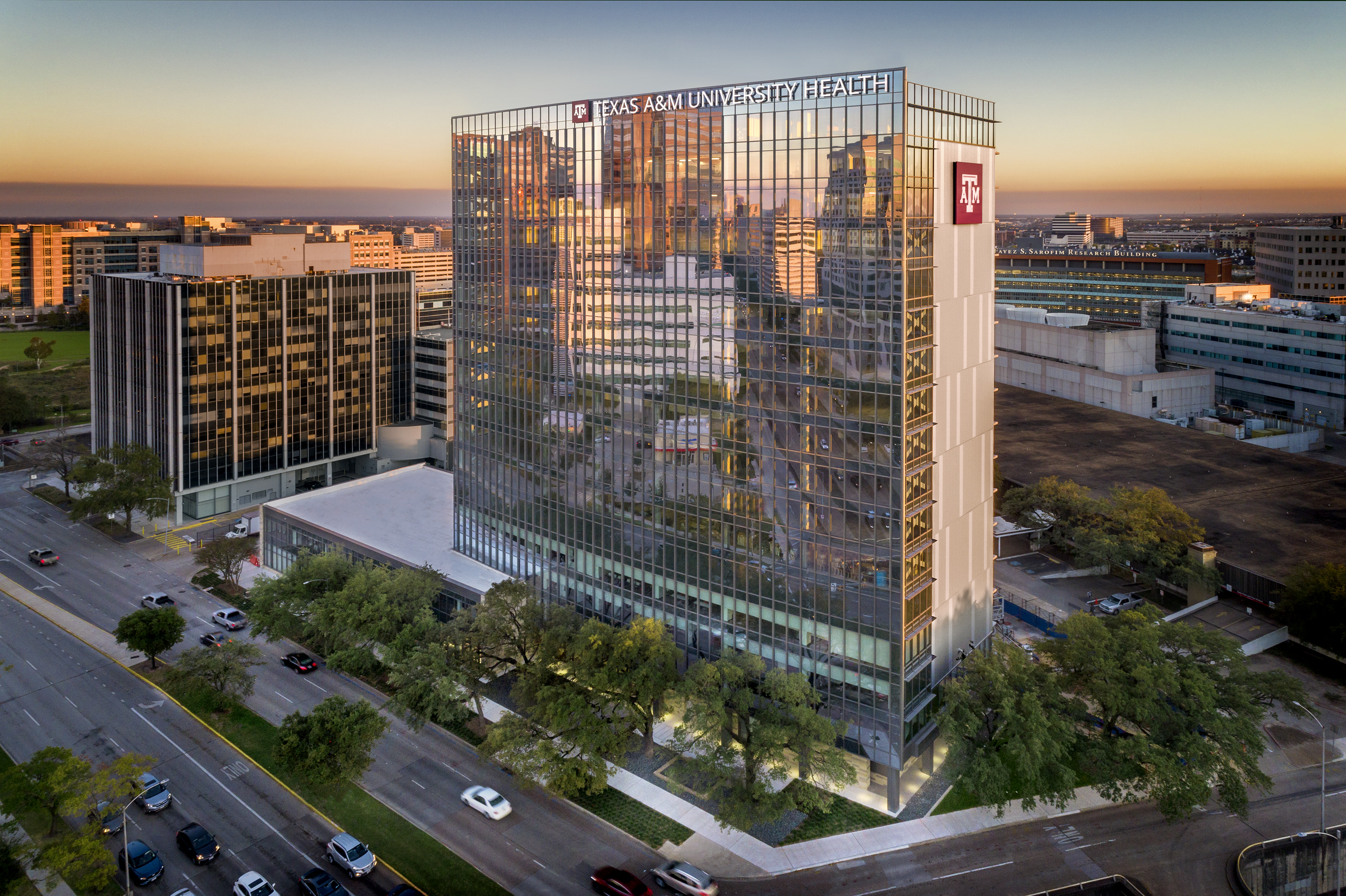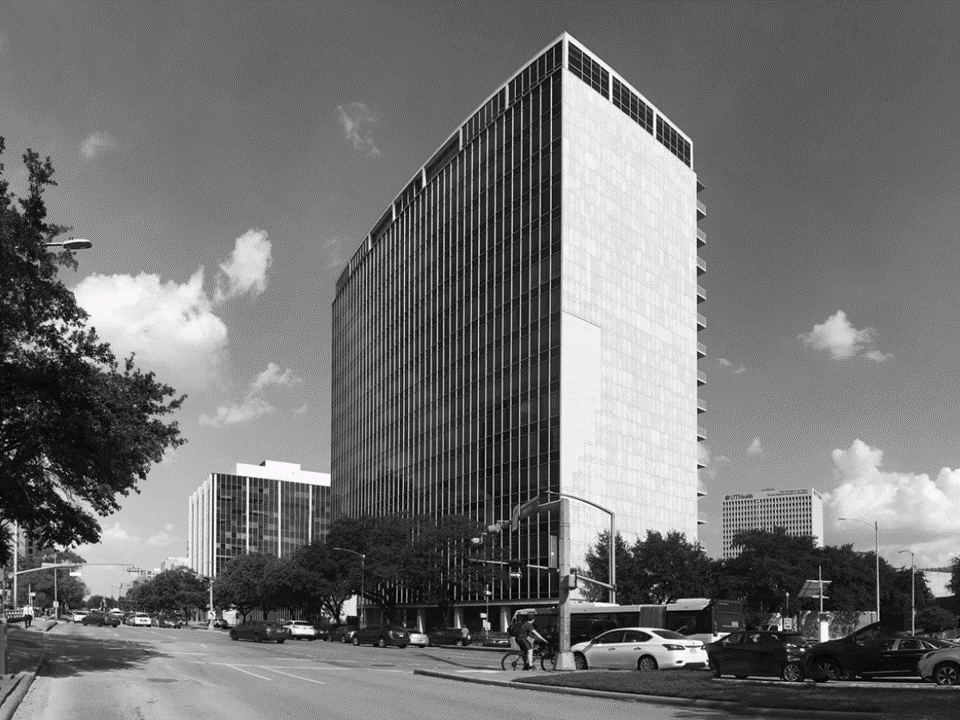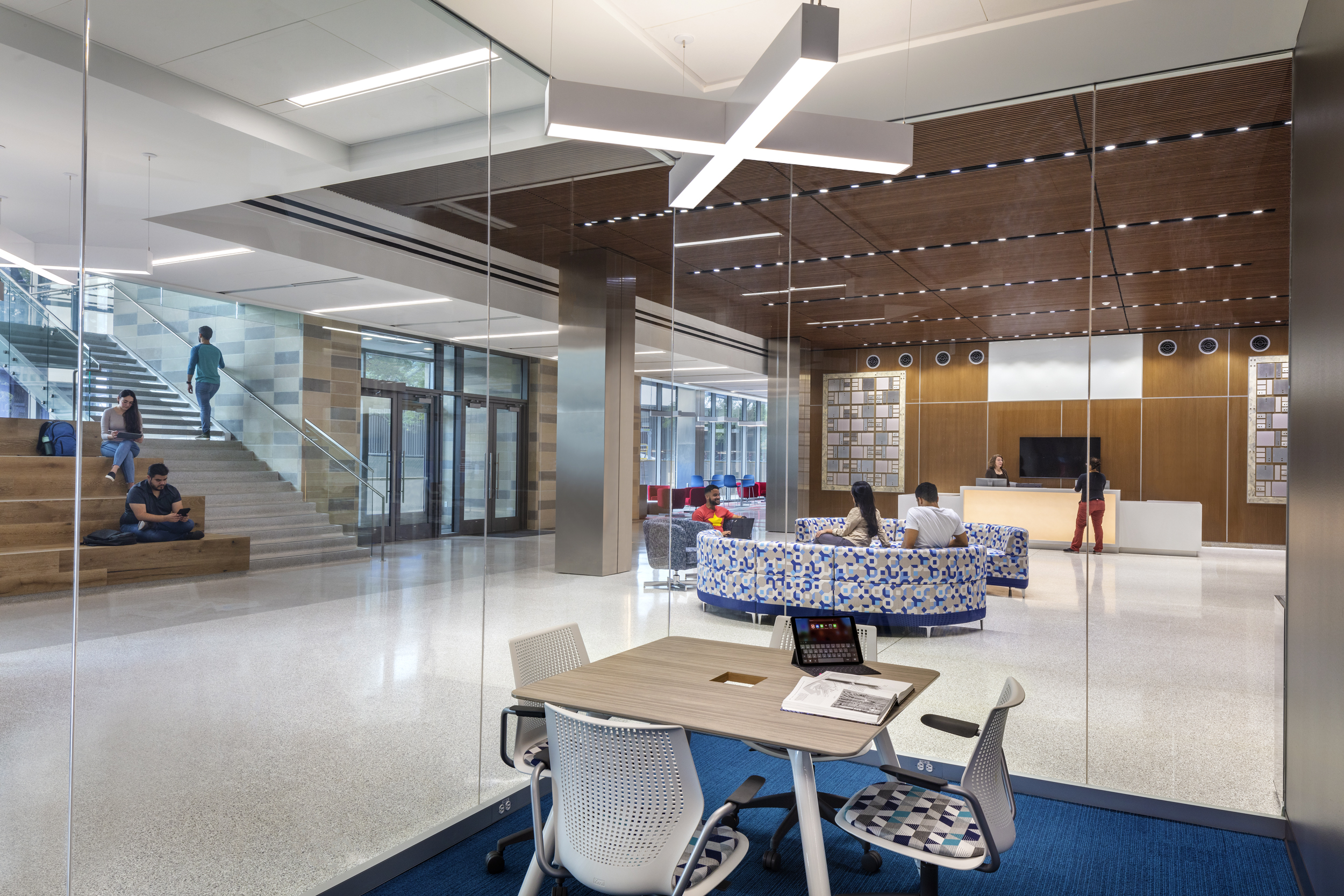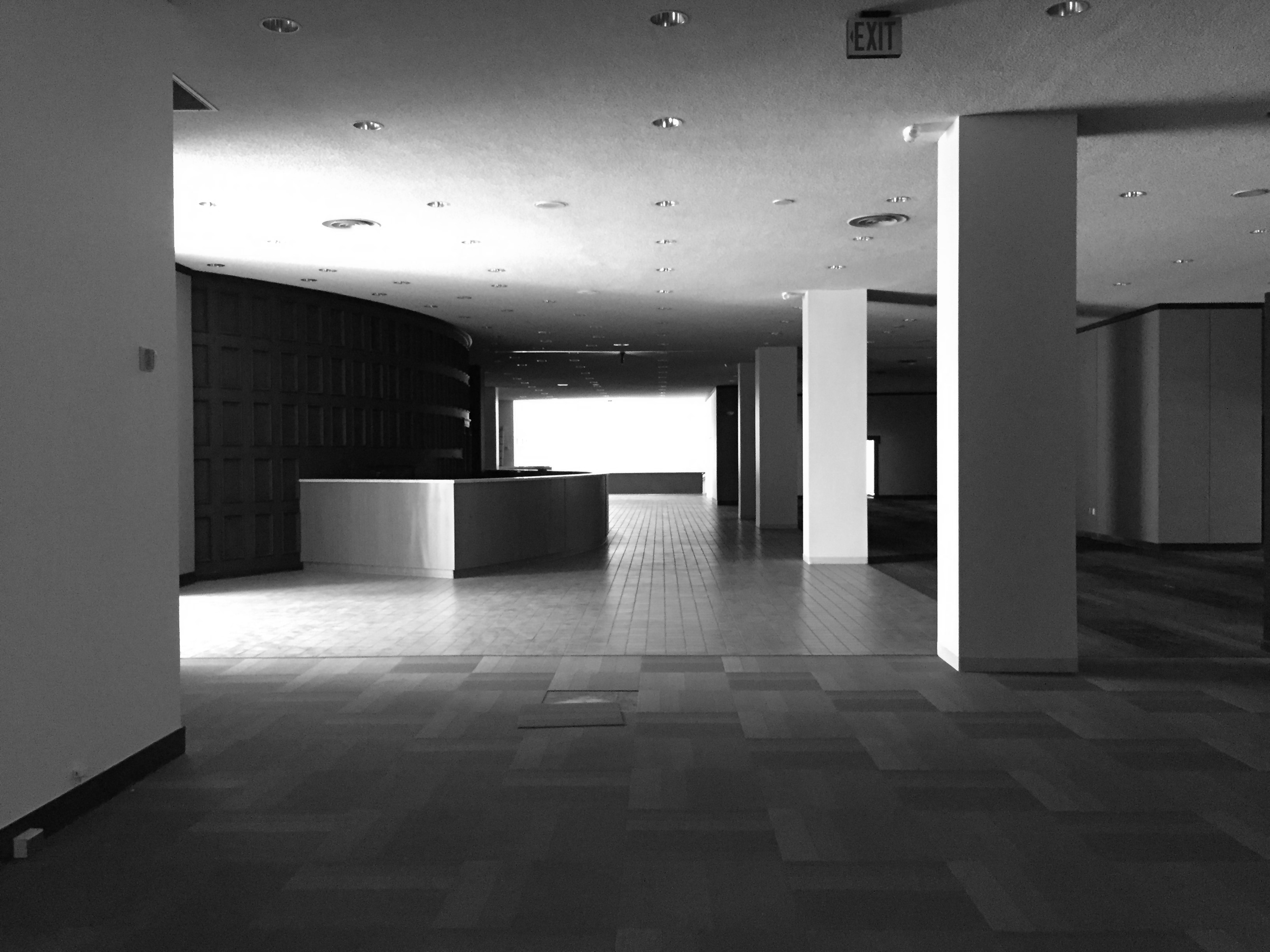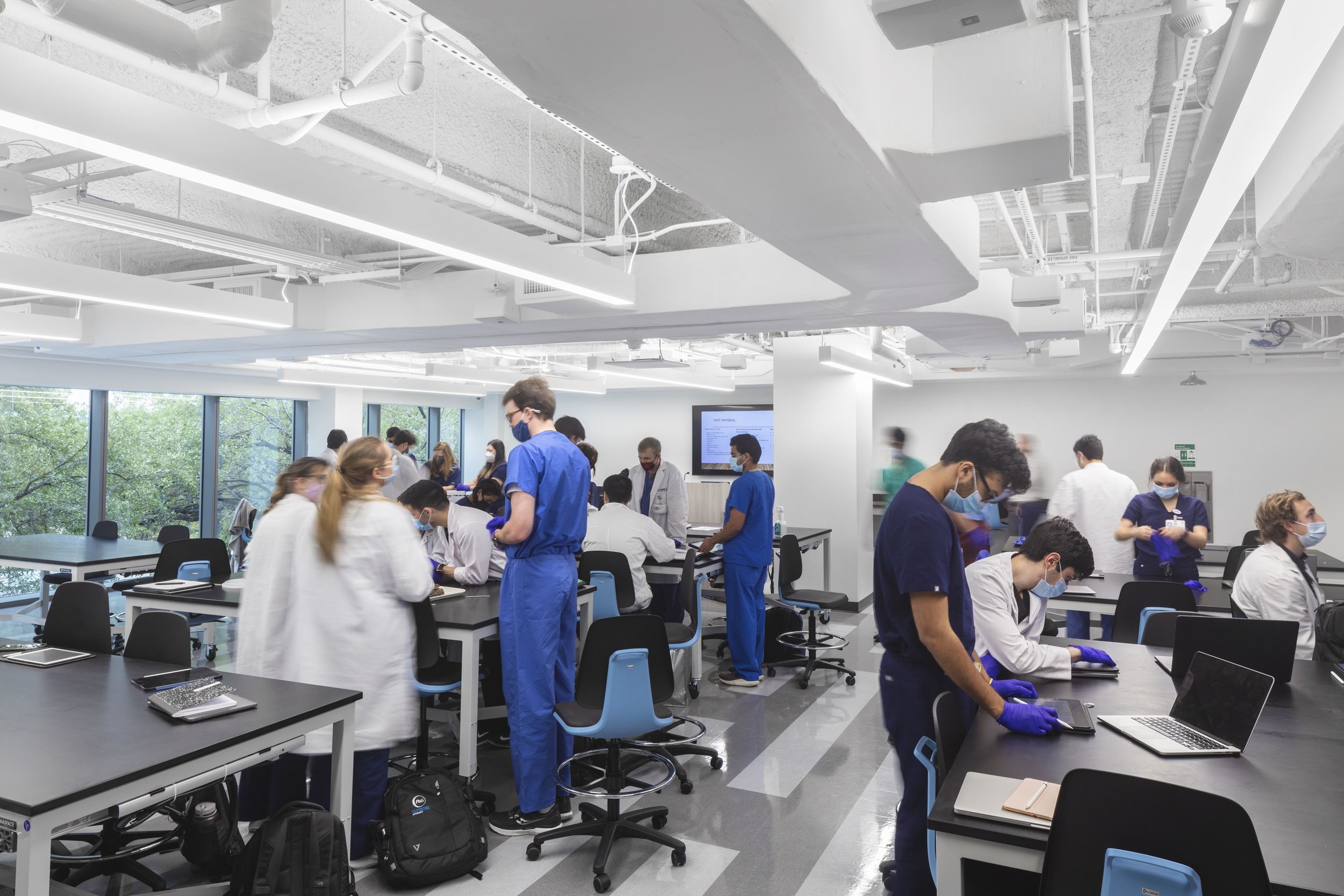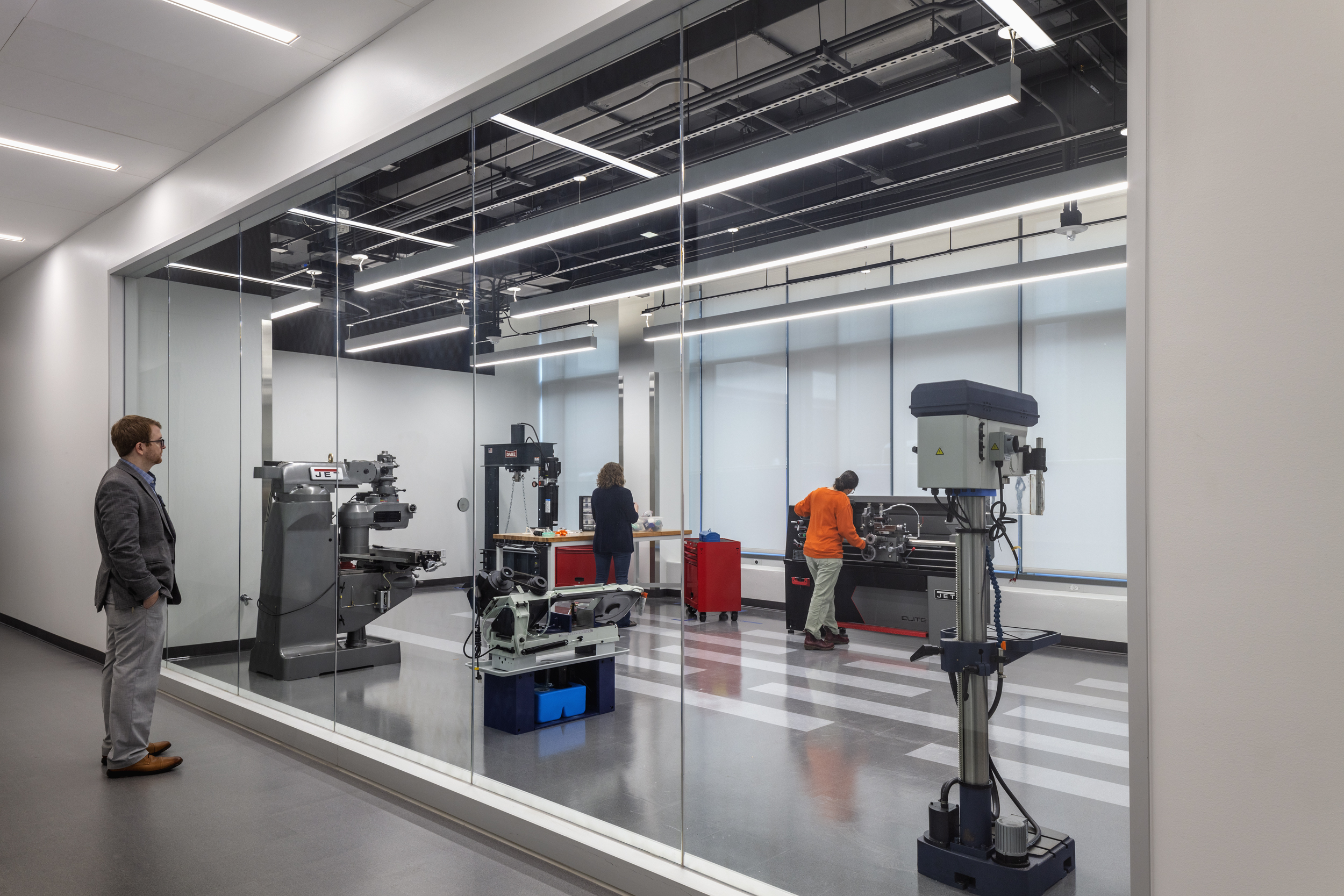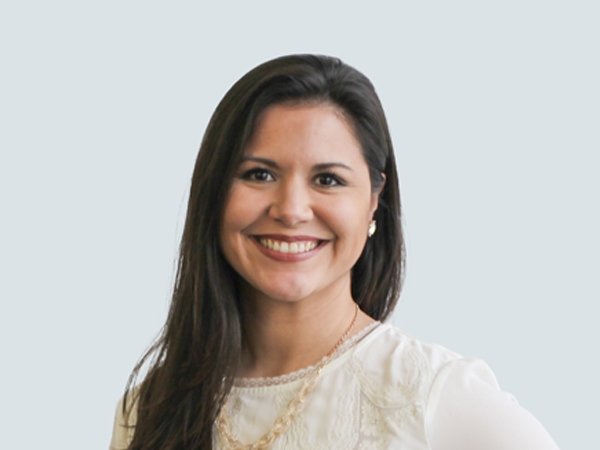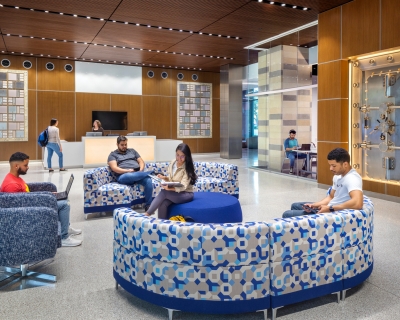Five years ago, a 1960s office and bank building stood in the heart of Houston’s bustling Texas Medical Center. Its bland interior revealed its age, and its weathered façade told stories of enduring harsh tropical storms. When Texas A&M University announced plans to debut its new School of Engineering Medicine (EnMed) at this location, some thought it best to demolish the 17-story building and start from scratch. However, the university saw beyond its imperfections and recognized its modernization potential. The Page design team embraced Texas A&M’s challenge to salvage and transform the existing building, which was also a more environmentally responsible solution. Last year, EnMed graduated its inaugural class, a group of 22 students who navigated their career beginnings within this extraordinary learning environment.
“The innovative nature of the new EnMed program immediately informed and guided our design perspective,” says Laura Vargas, the project’s director. “A partnership between Texas A&M University and Houston Methodist Hospital, the program is the only one of its kind in the world to offer students dual medical and master of engineering degrees after four years.” These hybrid professionals will be part medical doctor and part engineer (or “physicianeers,” a term coined by EnMed leadership); they’ll also possess entrepreneurial skills to invent or innovate new medical devices, and even start businesses for their inventions. In fact, medical device innovation is a requirement of the program, so our focus remained on engaging and inspiring students and faculty with every refreshed space.
Page transformed the entire building, including five of the 17 floors for the EnMed program, with remaining floors slated for future renovation as the program grows. A welcoming lobby on the first floor serves as a professional, collaborative space. Near a large auditorium, elements of the original bank building are carried into the modern design, including safety deposit fronts woven into a donor wall. The nearby makerspace puts medicine and engineering on display, inviting the community to witness medical device prototyping in real time. In another nod to the bank, Page repurposed the safe’s original door as the entry to the makerspace, which is now referred to as “The Vault.”
A library, multidisciplinary teaching lab, flexible classrooms, and student-focused spaces are located on the second floor. On the third and fourth floors, Page designed state-of-the-art simulation exam rooms and clinics that provide students with real-world medical experience. The third floor also features a wellness room with treadmills, Peloton bikes, and weights, plus space for yoga and meditation. For the top levels, where views stretch to Rice University, the Houston Astrodome, and beyond, we designed EnMed leadership offices, a boardroom, and a large multipurpose event space.
Modernizing this 1960s structure brought numerous challenges, including low floor-to-floor heights, a shallow footprint, and awkwardly placed, load-bearing columns. Page created the illusion of height by opening up the ceilings and using glass walls to draw the eye toward lush tree canopies and views of Texas Medical Center. These walls also allow passersby to observe students at work (even in typically secure rooms like the machine shop) and excite the community about the creativity brewing inside.
A complex exercise in adaptive reuse and insightful real estate development, EnMed also redefined how an academic building can function. “It’s not always necessary to tear down a structure and build from the ground up,” Laura says. “If a building has good bones, it’s worth a closer look to understand what’s possible. Texas A&M did a tremendous job recognizing the value of their asset and maximizing that value.” Through a delicate and extensive renovation, the 17-story tower is now home to a program that is revolutionizing the future of medical education. Most importantly, its location in the Texas Medical Center – where Page has designed more than 18 million square feet – places EnMed students at the center of the industries where they will exercise their newfound and unique innovation skills.
